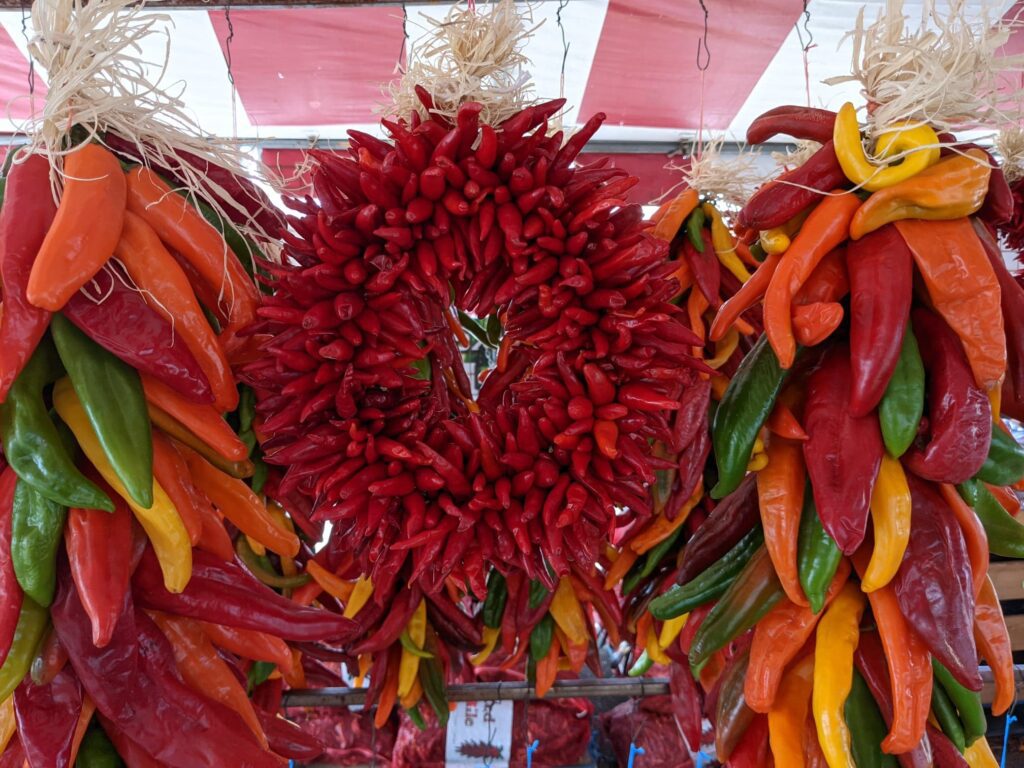
My Hometown’s Special Chili Decorations
We love chili peppers
We love them so much, we even use the Spanish way of writing chile. Every fall, the state of New Mexico comes alive with the chile season. Early in August, medium and hot varieties of green chile are ready. They typically come in 35 lb (16 kg) sacks, but grocery stores sell low quality flavorless chile in boxes as well. As the season moves forward, more flavors of chile are available, including mild, extra hot, all the way up to xxx hot. Around early September, green chile ripens into red chile and that is available for roasting too. One of the best ways of using red chile is also the topic of this article, red chile ristras.
What is a red chile ristra?
It is obviously not green. Jokes aside, ristra means string in Spanish, so it is essentially just a string of dried or drying red chile. Hanging the chile up prevents birds, who love easting chile seeds, from pecking the chile. Originally, ristras were used primarily as a food storage mechanism, but in modern times, more and more people use them only as a decoration. I think this is somewhat unfortunate, because Hatch chile is world famous for the flavor, not the look!
Why ristras are important to us?
In New Mexico, red chile is a big part of our diet. We have a state question, red or green, which indicates what kind of chile you want with your food. More than just that, seeing a red chile ristra reminds us about being at grandma’s house for Christmas, stuffing ourselves with tamales and posole. It feels welcoming when you go to your friends house and they hang a ristra in the doorway. Think about it like a wreath people hang in the winter time. We like ristras so much, we even make them into wreaths, stars, hearts, and any other shape we can imagine.
Different types of ristras
The majority of chile ristras in New Mexico use the Sandia chile varietal developed in the 1950s by Roy Harper. This chile is a good size, but not as juicy as some other varietals such as big jim or miss junie. Because it isn’t too juicy, it dries very well. Along with Sandia, we also use chile pequin, or chile de arbol as it is called in most of Mexico. Chile pequin is much more spicy than Sandia or even Lumbre, the hottest Hatch chile. It is used because the stems are long and thin, so it is easy to make it into special shapes, such as hearts, wreaths, crosses, and more.

Where to get a chile ristra in Albuquerque?
Go over to 2010 Eubank Blvd NE any day in September or October, and you will be sure to find a bunch of chile ristras available, including wreaths and other special shapes. Follow this map for directions!

